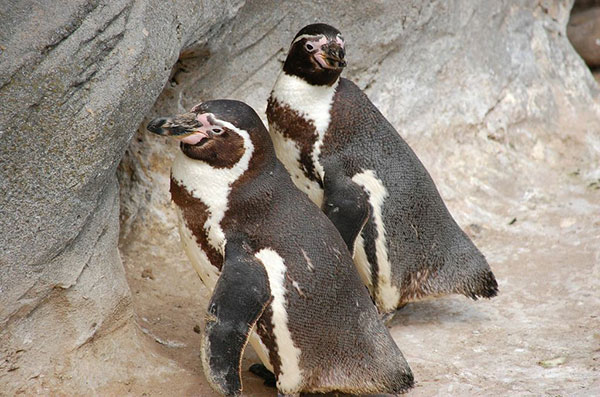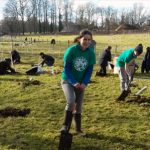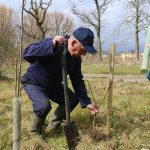Construction Underway in Penguin Coast

Our group of Humboldt penguins have begun gathering material from around their enclosure to start nest building in preparation for breeding, Humboldt penguins do not necessarily have a specified breeding season as they will mostly just reproduce when they have enough food available and plenty of resources. Though egg laying tends to occur between March and December in the wild with peaks around April-May and September-October.
There are 17 different types of penguin all of which live in the southern hemisphere, the Humboldt penguins, also known as Chilean or Peruvian penguins, live in small colonies along the pacific coastline of Chile and Peru and are a medium sized penguin, weighing no more than 13 pounds when fully grown. Humboldt penguins are classed as vulnerable as there is thought to be around 12,000 of them left in the wild and this number is still declining, this is mostly due to over fishing, climate change and habitat destruction, this species has been declining over the last thirty years so breeding efforts in zoos are incredibly important.
Penguins nest on dry land, in disused animal burrows or between rocks and crevices, at flamingo land we have purpose built nest boxes that blend in to the rock wall in the penguin enclosure. Humboldt penguins are monogamous and will breed in the same pair every year, both members of the pair will share equal duties in raising the chick. This species has also displayed same sex pairings before, there have been several cases in zoos when a pair of two male Humboldt penguins have successfully reared an abandoned egg in exactly the same way that a male-female pair would.
These penguins reach maturity at around 3 years old and can begin to reproduce from that age, the females will lay eggs in the nest or burrows that they have made to protect them from predators, they can lay up to two eggs at a time and the male and female will take it in turns to keep the eggs warm until they hatch, this can take around 40 days. Once the chick has hatched it is very dependent on its’ parents and will stay in the safety of the nest whilst the parents hunt for fish and bring food back to the chicks.


